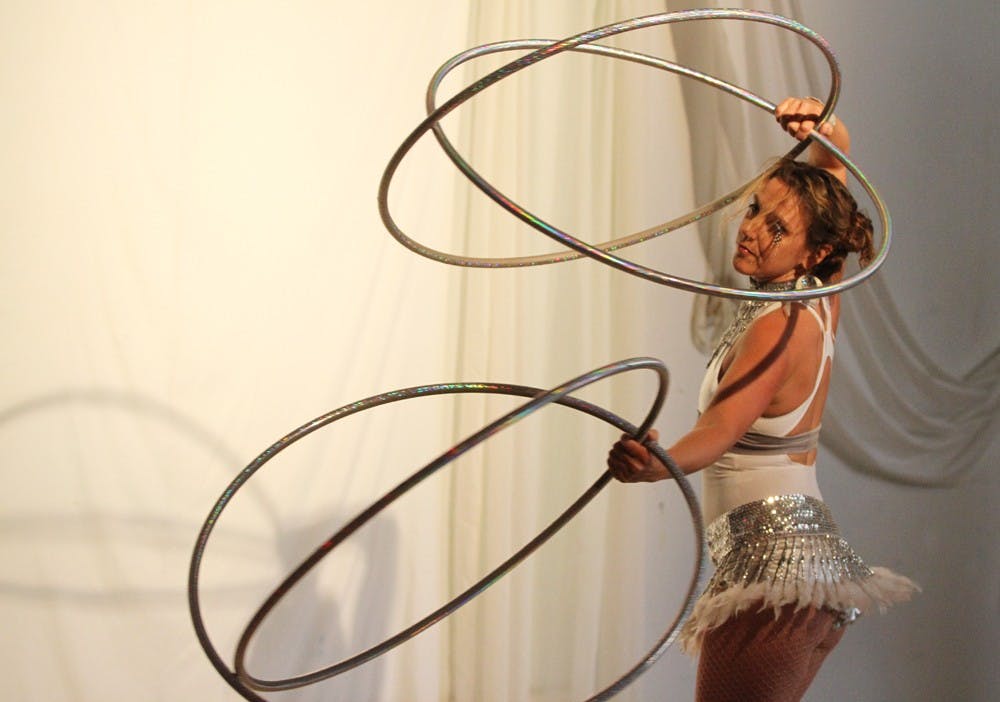Julia Hartsell discovered the art of hooping, a form of artistic dance involving a hula hoop, when she realized that this form of seamless movement could lift her out of the hopelessness and depression she was feeling.
Bonnie MacDougall began learning to hoop after she saw Hartsell perform on Weaver Street in Carrboro. A former college athlete and an avid runner, MacDougall had fallen into a depression after suffering a pelvic bone fracture that prevented her from exercising like she normally would.
MacDougall is now an employee at the Flowjo, a space founded by Hartsell in Carrboro that offers circus arts, ritual dance, healing arts and group classes. The building is mainly encompassed by a large dance space that accommodates hoopers, aerial dancers and silk/trapeze artists, but it also includes a treatment space for acupuncture and bodily healing.
Hartsell said the multi-purpose space can be described in one word: a sanctuary. She called it a place where people can feel at home in their bodies and hopefully heal during times of darkness like she and MacDougall did.
“The practices at the Flowjo have really anchored communities," Hartsell said. "It’s good medicine, and it’s really helpful for coming back to the present moment. I’ve seen people finding joy and connection and community through hooping and through dance forms — I keep seeing these practices enrich and enhance and heal people."
The Flowjo now hosts bi-monthly Flow Jams in which flow artists gather to practice in an open space with music and without speaking. Ann Humphreys is a regular at Flow Jams who learned hooping after seeing a performer on Weaver Street. She said she tried yoga in the past, but felt she could achieve a higher form of expression through dancing and hooping.
“It’s a movement meditation," Humphreys said. "There’s a meditative quality to flow art that absorbs your whole attention: mind, body and soul."
Flow Jams bring people together to practice similar forms of art and dance, but each person’s style and interpretation is different, MacDougall said, which makes these gatherings so unique.
“No two people are going to do it the same way," MacDougall said. "It requires merging the body with the prop and falling into a state of continuous movement. If you’re lucky, it can feel like having an extra appendage.”



